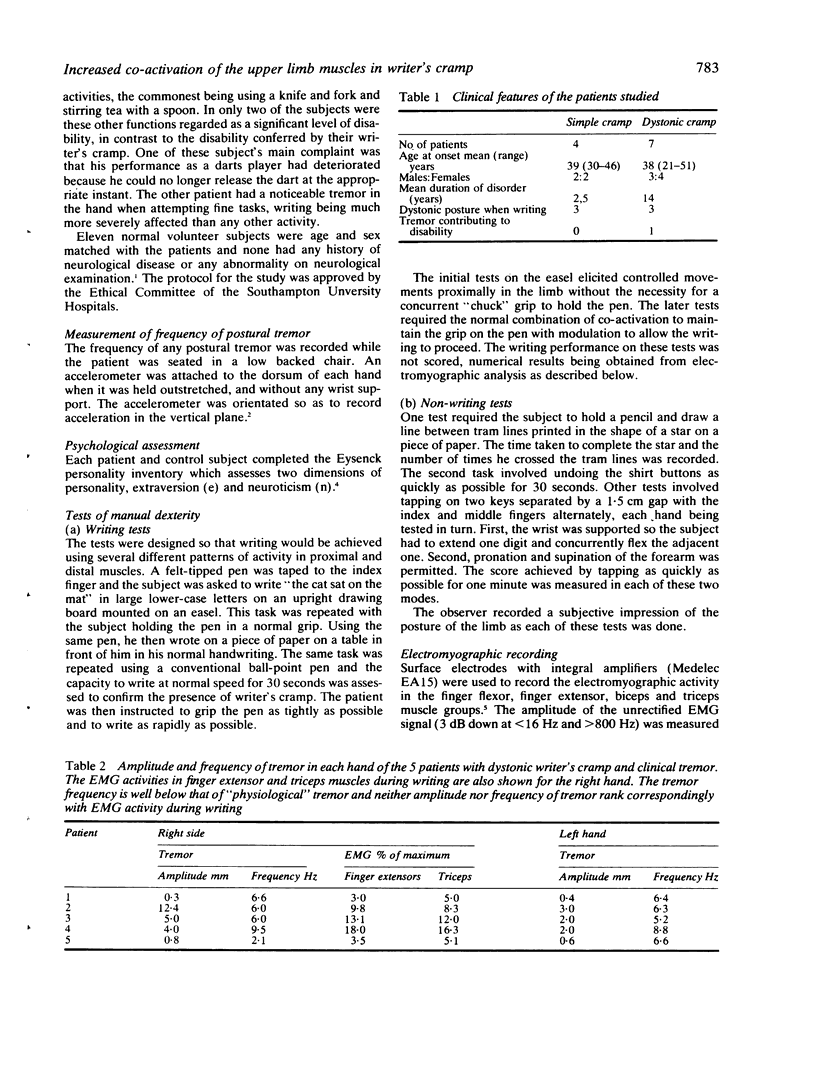Abstract
Eleven patients with writer's cramp were studied during the performance of a series of writing and non-writing tasks. Their performance in the tasks and the intensity of contraction in the flexor and extensor muscles of the fingers and elbow (recorded electromyographically) were compared with the results from a group of matched normal controls. The patients showed highly significant increases in muscle activation especially in the triceps muscle which was overactive in all but one of the tasks undertaken. Psychometric testing showed no difference between patients and controls. The results support the view that writer's cramp is a form of focal dystonia in which the disorder of motor control is not confined to writing activities.
Full text
PDF





Selected References
These references are in PubMed. This may not be the complete list of references from this article.
- Bindman E., Tibbetts R. W. Writer's cramp--a rational approach to treatment? Br J Psychiatry. 1977 Aug;131:143–148. doi: 10.1192/bjp.131.2.143. [DOI] [PubMed] [Google Scholar]
- Ferguson D. An Australian study of telegraphists' cramp. Br J Ind Med. 1971 Jul;28(3):280–285. doi: 10.1136/oem.28.3.280. [DOI] [PMC free article] [PubMed] [Google Scholar]
- Sheehy M. P., Marsden C. D. Writers' cramp-a focal dystonia. Brain. 1982 Sep;105(Pt 3):461–480. doi: 10.1093/brain/105.3.461. [DOI] [PubMed] [Google Scholar]


